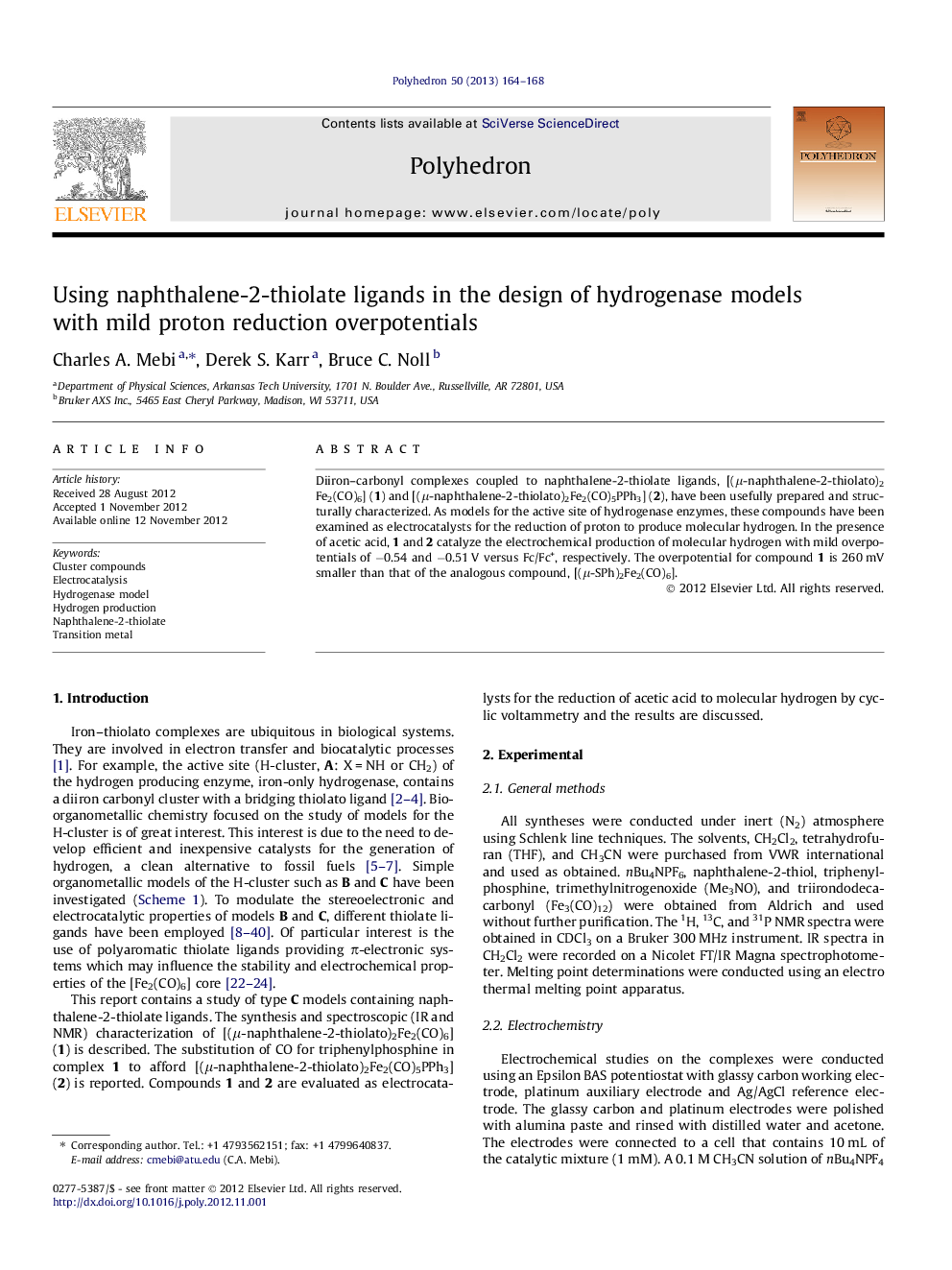| Article ID | Journal | Published Year | Pages | File Type |
|---|---|---|---|---|
| 1334634 | Polyhedron | 2013 | 5 Pages |
Diiron–carbonyl complexes coupled to naphthalene-2-thiolate ligands, [(μ-naphthalene-2-thiolato)2Fe2(CO)6] (1) and [(μ-naphthalene-2-thiolato)2Fe2(CO)5PPh3] (2), have been usefully prepared and structurally characterized. As models for the active site of hydrogenase enzymes, these compounds have been examined as electrocatalysts for the reduction of proton to produce molecular hydrogen. In the presence of acetic acid, 1 and 2 catalyze the electrochemical production of molecular hydrogen with mild overpotentials of −0.54 and −0.51 V versus Fc/Fc+, respectively. The overpotential for compound 1 is 260 mV smaller than that of the analogous compound, [(μ-SPh)2Fe2(CO)6].
Graphical abstractIron(I) carbonyl clusters containing the polyaromatic thiolate ligands, naphthalene-2-thiolates, have been prepared, structurally characterized and examined as catalysts for the reduction of proton to molecular hydrogen. The compounds electro-catalytically generate hydrogen with favorable overpotentials.Figure optionsDownload full-size imageDownload as PowerPoint slide
